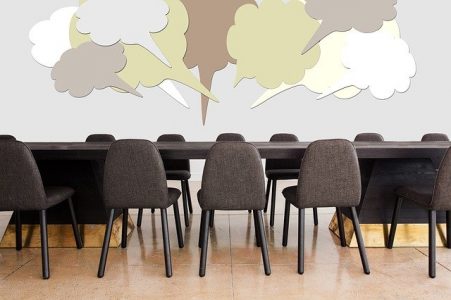
In Leadership Mastermind groups, participants share their personal challenges and get input and solutions from their peers.
Moshe was struggling. As the lower school principal of a day school in northern New Jersey, Moshe was trying to stay afloat in a pandemic that has sapped all our energy and made school leadership – already a lonely field – even more isolating.
In particular, Moshe had a problem that’s been weighing on him for a while. He supervises an assistant principal who, in turn, manages all K-5 teachers within the school. One teacher, in particular, is a bit “old school” for this progressive institution, and the AP has it in for her. Yet, from Moshe’s perspective, the teacher is largely successful and is popular with her students (a group that has historically presented many behavioral challenges) and their parents. The academic data also points to her meeting, if not exceeding learning benchmarks.
On the one hand, Moshe wanted to support his AP and help get this veteran teacher “on board.” On the other hand, he saw many positive qualities in her that his AP either misses or chooses to ignore. He just didn’t know how best to proceed.
When I launched my School Leadership Mastermind for school principals back in June, I wasn’t quite sure what to expect. It was my first time running a mastermind group of any kind and, while I had participated in and gained from other masterminds, running my own would be a totally different experience. Particularly in the throes of a COVID pandemic that had put school leaders back on their heels for months.
Thankfully, the group quickly coalesced around a common desire to grow as professionals, expand their professional networks, find comfort in community, and have their most burning questions answered on the “hot seat.”
What’s a “hot seat?” Known also as a “spotlight,” a hot seat is a segment of each mastermind session during which one member presents a personal challenge for others to reflect on and share solutions. Following the hot seat, I get with the members to clarify their takeaways and get them to commit to purposeful, goal-driven actions to propel them forward.
In Moshe’s case, the group impressed upon him the importance of prioritizing the students’ needs over our adult wants. If the class is well taught and well managed, then the AP needs to reset her expectations and work with the teacher “where she is,” rather than try to remake her. If the AP is not willing or able to see past the teacher’s shortcomings, perhaps Moshe needs to step in and make the teacher his responsibility instead. And he also needs to get with the AP and coach her to be more effective with and supportive of all the teachers in the department.
Of course, masterminds are not only for school leaders. In fact, they are used all throughout the world, in every sector and amongst colleagues, to set (and be held accountable to) personal stretch goals, share ideas, give and gain feedback, and expand and deepen professional and personal networks.
Examples of best-practice learning that I teach in my mastermind are:
- Time management and productivity, including prioritization, task management, and delegation
- Goal setting
- Active listening
As well as industry-specific work.
Organizational leadership is difficult, lonely work – especially now. Leadership cohorts let you connect with peers who understand the nuances of your work and can offer practical insight and support.
Naphtali Hoff, PsyD, is president of Impactful Coaching & Consulting. He is launching a new mastermind cohort for educational outreach professionals who want to up their game and gain much-needed clarity and support during these most challenging times. To learn more, email nh@impactfulcoaching.com.



















